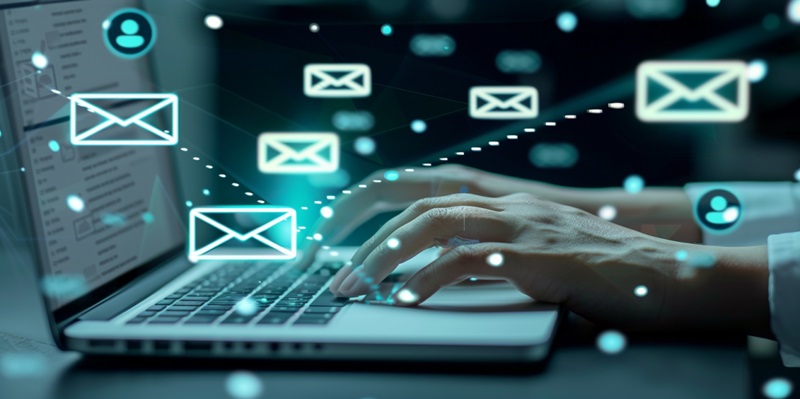In a world where everyone’s inbox is flooded with emails, standing out from the crowd is paramount. Email marketing is not just about what you say; it’s also about when you say it. Like a golfer who meticulously times their swing to send the ball soaring to the green, email marketers must find their rhythm in timing their messages. The right moment can be the difference between a new lead and an email lost in the abyss of the “unread” folder.
Understanding the Psychology of Email Engagement
Recognizing Behavioral Patterns
To master email timing, one must first recognize the diverse behavioral patterns of their audience. Understanding these patterns allows you to schedule emails when they’re most likely to be seen. For instance, a parent may check their email very early in the morning before their children wake up, while a college student might be more reachable late at night. By tailoring your email dispatch times to these patterns, you increase the likelihood of engagement.
Identifying Your Audience
Who is your audience really? Pinpointing whether they are early risers who skim through their inboxes over coffee or night owls who peruse their emails after dinner is vital. By segmenting your audience based on their active hours, you can optimize the success rate of your email campaigns, ensuring your messages land at the top of their inbox at just the right time.
Analyzing Engagement Data
Metrics don’t lie; they offer an insight into the lives of your subscribers. Analyzing the times when your audience engages with your emails—the opens, the clicks, the replies—can unveil patterns that lead to strategically scheduled sends. Once you know what times garner the most engagement, you can adjust your email campaigns accordingly to make sure your communications are resonating with the audience when they’re most receptive.
The Analysis of Different Industries and Timings
Consumer-Focused vs. Professional Services
Weekends could be golden for consumer-focused industries as people have more leisure time to browse and shop, whereas emails from professional services might perform better in the heart of the workweek when business issues are top-of-mind. Identifying the nature of your industry and its audience’s behavior is pivotal in determining the timing that will lead to the best open and conversion rates.
Seasonal and Time Shifts
As the seasons change, so do people’s routines. During summertime, your subscribers might check their email sporadically throughout the day, opening up opportunities for successful midday sends. In contrast, the winter months might see increased evening engagement as people spend more time indoors. Observing these shifts can be instrumental in aligning your email campaign timings with your audience’s seasonal habits.
Optimizing Campaigns with Data-Driven Strategies
The Importance of A/B Testing
In truth, there is no universal ‘best’ time to send emails—it varies by audience, industry, and content. This is where A/B testing comes into play. By sending identical emails at different times to similar audience segments, you collect valuable data on which timing yields better engagement rates. This methodical approach can pinpoint a more effective timing strategy tailored to your specific demographic.
Establishing Test Protocols
To ensure you get clean, useful data from A/B tests, proper protocols must be in place. It’s important to vary only the timing of the emails while keeping other variables such as content, subject line, and audience segment the same. This will provide a clear picture of how timing affects your campaign’s performance and will prevent other factors from muddying the waters.
Interpreting Test Results
Once the A/B tests are completed, the next step is to analyze and interpret the data. This involves looking beyond the open rates and diving into click-through rates, conversions, and even the time spent reading your emails. From this data, patterns will emerge, showing clear indications of the optimal times for engagement, allowing for precise adjustments to future campaign timings.
Tailoring Content to the Right Time and Context
Pairing Content with Timing
Timing and content are a match made in marketing heaven. Sending renewal reminders at the end of a workday might catch professionals when they’re wrapping up tasks, whereas promotional content could perform better on weekends when people have more free time. Understanding and pairing the content with the appropriate context enhances the effectiveness of your campaigns.
Crafting Relevant Messages
Relevance is the keystone of engagement. A well-timed email with a message that resonates with the current status or needs of the recipient is much more likely to be effective. Whether it’s a weekday product-launch email targeted to business customers or a weekend e-newsletter for leisure activities, crafting a message that fits squarely into your audience’s current moment elevates the chance for engagement.
Adapting to Evolving Preferences
In a digital era where inboxes are perpetually inundated, your emails must shine. Email marketing transcends mere content—it’s a dance of timing. Imagine a golfer, intricately timing their swing; that’s an email marketer gauging the perfect moment to hit send. That critical timing often spells the difference between sparking interest or vanishing into the digital void of unopened messages.
With volumes of daily emails, striking the right chord with recipients requires not just compelling content, but also strategic timing. A meticulously planned email can lead to a conversion, whereas an ill-timed message is likely to be ignored. Thus, email marketers take on the role of timing strategists, seeking that sweet spot in a person’s day to maximize engagement and minimize dismissal. The success of email marketing hinges on this balance, ensuring that your message lands with impact, rather than slipping unnoticed into the unread pile. It’s a delicate art—timing is indeed everything.

